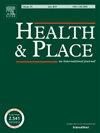印度潜在的环境悖论:儿童和青少年的空气污染预防与久坐行为之间的联系
IF 3.8
2区 医学
Q1 PUBLIC, ENVIRONMENTAL & OCCUPATIONAL HEALTH
引用次数: 0
摘要
环境空气污染对全球南方国家的运动行为的负面影响是一个重大问题。然而,关于这种复杂关系的证据有限。这项研究评估了印度儿童和青少年为防止接触环境空气污染而采取的预防措施与久坐行为之间的关系。来自印度28个城市和农村地区41所学校的5-17岁的参与者(N = 986)完成了在线调查,提供了有关运动行为的信息,包括为避免暴露于空气污染而采取的预防措施、对建筑环境的感知和久坐行为。建立了多变量伽玛回归模型,以久坐行为作为主要标准变量来调整社会人口变量。除了总体样本模型外,还建立了六个分离的模型来理解年龄、性别和地理差异。在总体样本(β = 0.085, 95% CI = 0.001, 0.169)和13至17岁年龄组(β = 0.110, 95% CI = 0.007, 0.227)中,报告采取预防措施以防止暴露在环境空气污染中的儿童和青少年的每日久坐时间显著增加。然而,在以下模型中,能够在上学前后使用户外体育设施与较低的久坐行为有关:总体而言,农村,5至12岁和13至17岁年龄组,男孩和女孩。据我们所知,这是第一个描述印度儿童和青少年为避免接触环境空气污染而采取的预防措施与久坐行为之间潜在矛盾关系的研究,即,保持健康的行为是另一种慢性疾病风险因素的延续。本文章由计算机程序翻译,如有差异,请以英文原文为准。
A potential environmental paradox in India: Associations between air pollution precautions and sedentary behaviour among children and youth
The negative impact of ambient air pollution on movement behaviours in the global south is a significant concern. Yet, evidence about this complex relationship is limited. This study assessed how precautions taken to prevent ambient air pollution exposure are associated with sedentary behaviour among children and youth in India. Participants aged 5–17 years (N = 986) from 41 schools in 28 urban and rural areas across India completed online surveys to provide information on movement behaviours, including precautions taken to avoid exposure to air pollution, perception of built environment, and sedentary behaviour. Multivariate gamma regression models were developed, adjusting for sociodemographic variables with sedentary behaviour as the primary criterion variable. Apart from an overall sample model, six segregated models were built to understand age, gender, and geographical variations. Children and youth who reported taking precautions to prevent ambient air pollution exposure were associated with significantly higher daily minutes of sedentary behaviour in both the overall sample (β = 0.085, 95 % CI = 0.001, 0.169) and the 13 to 17 age group (β = 0.110, 95 % CI = 0.007, 0.227). However, being able to access outdoor physical activity facilities before or after school was associated with lower sedentary behaviour in the following models: overall, rural, 5 to 12 and 13 to 17 age groups, and boys and girls. To our knowledge, this is the first study to depict a potential paradoxical relationship between precautions taken to avoid exposure to ambient air pollution and higher sedentary behaviour among children and youth in India i.e., a health-preserving behaviour is perpetuating another chronic disease risk factor.
求助全文
通过发布文献求助,成功后即可免费获取论文全文。
去求助
来源期刊

Health & Place
PUBLIC, ENVIRONMENTAL & OCCUPATIONAL HEALTH-
CiteScore
7.70
自引率
6.20%
发文量
176
审稿时长
29 days
期刊介绍:
he journal is an interdisciplinary journal dedicated to the study of all aspects of health and health care in which place or location matters.
 求助内容:
求助内容: 应助结果提醒方式:
应助结果提醒方式:


